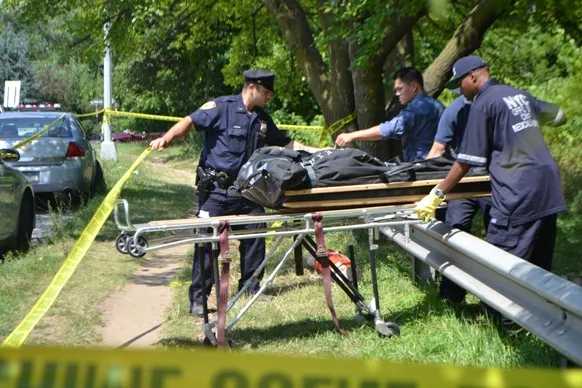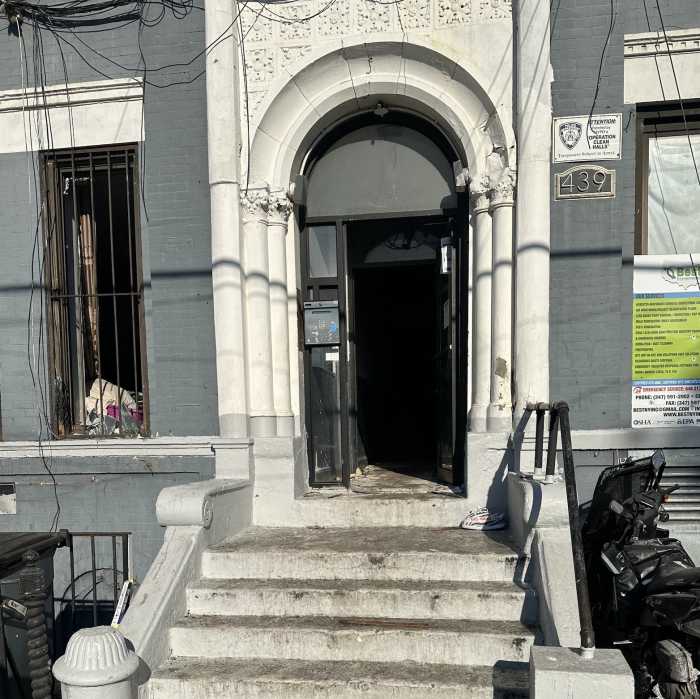By Julie Shapiro
A 10,000-pound elevator motor that shuttled hundreds of people a day at the original World Trade Center will be part of the National September 11 Museum’s permanent exhibit when it opens in 2013.
The exhibit will also tell the story of John Menville, who arrived at the World Trade Center in 1969 to install the elevators and stayed for 32 years to maintain them.
On 9/11, thousands of people, including Menville, used the elevators to evacuate. When the first plane hit, Menville’s immediate thought was of how long it would take to repair the elevators.
“It never, ever crossed my mind that the buildings would come down — ever,” Menville said in a phone interview this week. “If it was still there, I’d still be there.”
When Menville, now 65, helped install the massive 8-foot-by-5-foot motors, called 339 machines, they were the first in North America and the biggest in the world. The only place they had ever been used before was in South African diamond mines.
“It was such a powerful machine,” Menville said. “Once we got a handle on it, it became one of the best machines ever.”
After installing the elevators, Menville and his coworkers from Otis Elevator Company got to test-ride them, flying through the building at 1,600 feet per minute.
“They were so fast, and they were so large,” Menville said. “Normal elevators at that speed had a capacity of 3,500 pounds, but this one had a capacity of 10,000 pounds. And it was faster than anything we’d ever put in.”
Nearly 40 years later, Menville saw the same motors burned and lying in pieces when he visited Hangar 17 at J.F.K. airport, where artifacts from the collapse of the Twin Towers are stored. Seeing the broken motors was discouraging, he said, but he’s glad that cleanup workers salvaged about 15 of them from the site, and that visitors to the museum will get to see one of them.
“It would be nice for [visitors] to know the technology that went into moving them around that building, what it took to do that,” Menville said.
The elevator motor will sit at bedrock in the museum, in a vast corridor dotted with other large objects, like twisted steel and crushed emergency vehicles. Visitors will pass through the gallery on their way to the primary exhibit, where they will see the story of 9/11 told through the eyes of the individuals who experienced it.
The sheer size of the artifacts in the hall will give visitors a sense of the massive scale of the towers, said Jan Ramirez, chief curator of the museum.
“By beginning to look at the condition of the orphaned relics of the World Trade Center, people will begin to make the transition: If this is what happened to two quarter-mile-high buildings, what happened to the human beings here?” Ramirez said.
The motor is not as contorted as some of the other artifacts in the museum, but the exterior is rusted and blistered from fire, and splayed wires pour from its sides. Ramirez has not been able to find a serial number, so she can’t determine where exactly the motor came from, but it’s likely from the North Tower, the second to collapse.
The motor was one of 20 in each tower that powered shuttle elevators, designed to get people quickly from the ground up to the sky lobby transfer points. The motors sat in clusters in machine rooms near some of the lobbies.
The motor room near the 78th floor of the South Tower likely saved many lives on 9/11, Ramirez said. When the plane plowed into the tower, it lodged in the motor room, unable to penetrate the dense, heavy equipment made of steel, iron, copper and fiberglass. Because the motors stopped the plane from moving farther into the building, one stairwell stayed intact, allowing people to evacuate, Ramirez said. The plane that hit the North Tower, on the other hand, blocked off all the stairways.
The motor that will go in the museum is not something an average worker in the towers would have ever seen, said Joe Daniels, president of the museum foundation. On 9/11, for the first time since the towers were built, suddenly all of the mechanicals were laid bare, crumbling on the pile.
“It really peels back the buildings and the destruction of 9/11,” Daniels said of the elevator motor. “It shows what the buildings were and how much went into them.”
Daniels pointed out that mechanical equipment is once again on display in a more positive way at the World Trade Center site, as two of the new towers rise.
Menville was in the Trade Center both during the 1993 bombing and on 9/11. In 1993, he helped police evacuate people down the stairs once the elevators stopped working, then he spent the rest of the day manually moving each stuck elevator to the nearest floor to free the people inside. For the next six months, Menville worked 12 hours a day, seven days a week, to repair damage to the elevators.
On 9/11, Menville was in Tower 2 when the first plane hit. He evacuated and raced to a friend’s store in the Seaport to use the phone, then headed back to the towers to help. He was standing on Church St. when Tower 2 started collapsing.
“There were no thoughts — we just turned around and ran,” Menville said.
Menville was working for ACE Elevator then, which took over for Otis in 1994. All the ACE employees got out alive, he said.
Menville continued working for ACE in New Jersey after 9/11, then he returned to Otis in 2002. At the end of April, around his 66th birthday, Menville will retire from Otis and open a consulting business. He plans to return to the Trade Center site to see the elevator motor once the museum opens.
As Ramirez, the curator, puts together the museum’s exhibits, she noted that the motor deserves an important place in the story of the Trade Center’s vertical city.
“Without Otis Elevator, the World Trade Center would have been an impossibility,” Ramirez said.
Julie@DowntownExpress.com

































